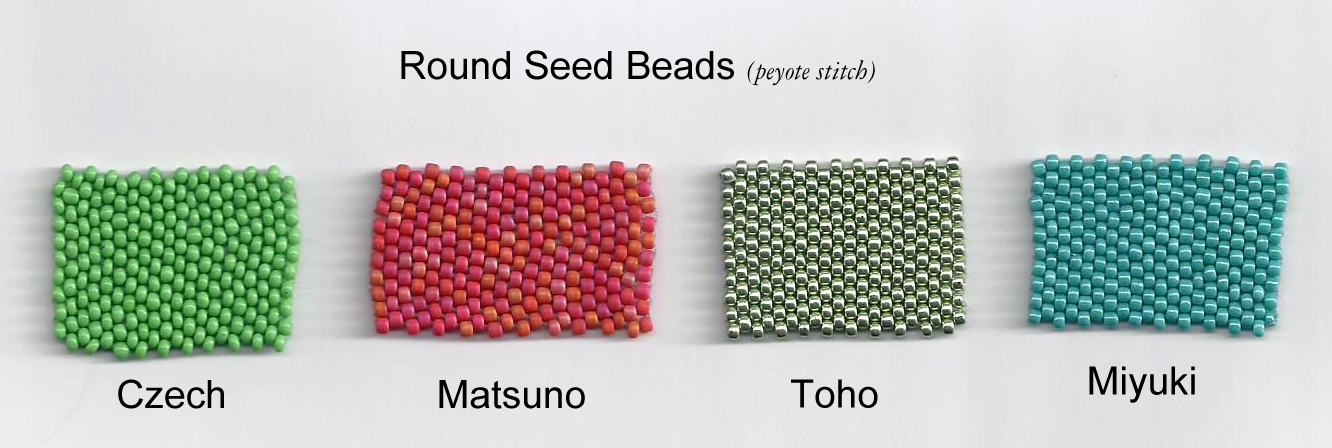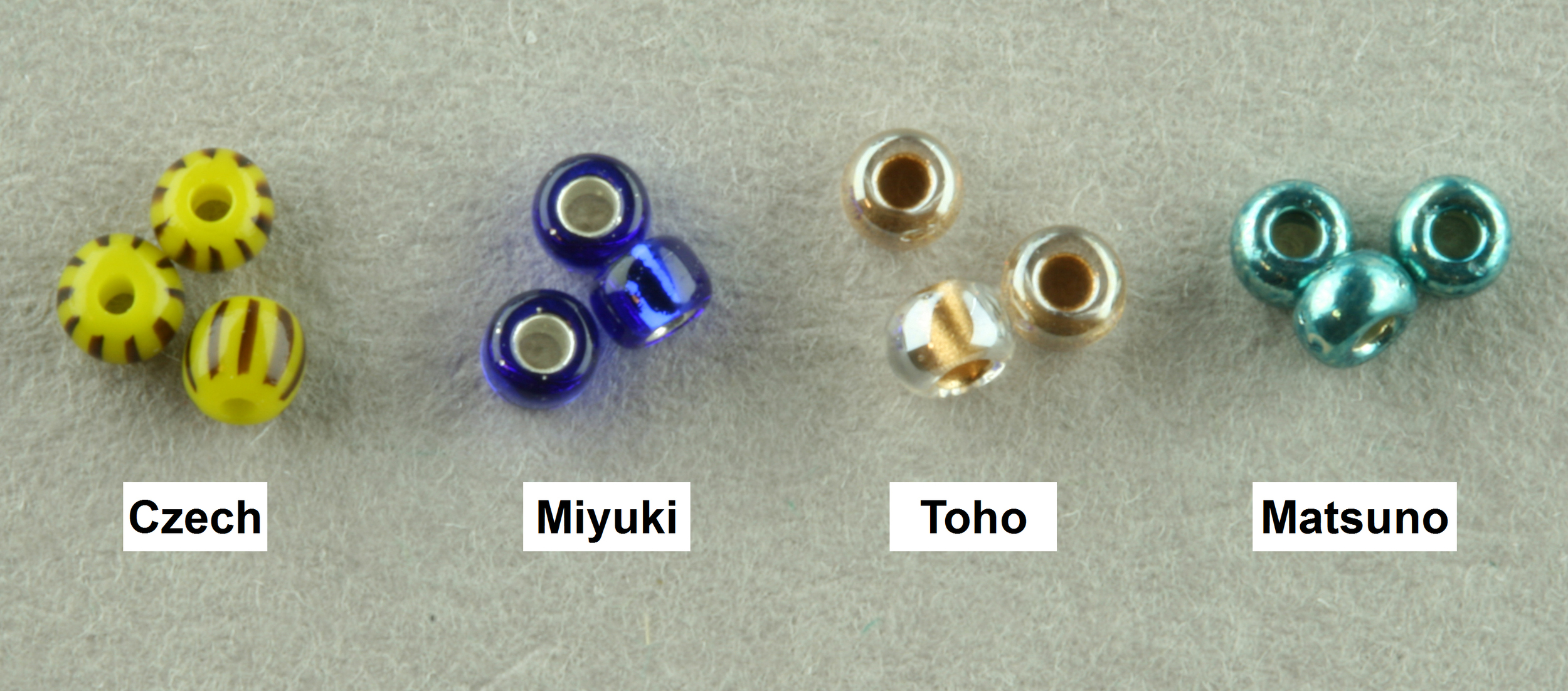Seed Bead Manufacturers Variations
Linda Landy
Beads vary dramatically between manufacturers. They are generally divided into Japanese Seed Beads, Japanese Cylinder Beads, Czech Seed Beads and Others. Bead selection makes a tremendous difference in the finished work.
Japanese Seed Beads: The Japanese are known for producing the finest quality seed beads because they are the most uniform. There are three major factories in Japan that produce seed beads: Miyuki, Toho and Matsuno. Miyuki & Toho beads are a bit more rounded, with large holes. Matsuno beads tend to be taller (hole to hole) than they are around which makes them look a bit cylindrical.
Japanese Cylinder Beads: Japanese Cylinder Beads are considered the Cadillac of seed beads. Miyuki’s cylinder bead, known as a Delica bead, is tube shaped and extremely consistent in size — without the rounded, bulging sides common to seed beads. When woven they fit together beautifully. Delicas, generally more expensive than seed beads, are typically sold in smaller amounts. Many beaders prefer Delicas because they have large holes for their size (which accommodates multiple passes of thread), they require little culling, and they come in a huge variety of colors. A finished project using Delicas would weigh less than a comparable seed bead project, since the walls of the Delicas are very thin. Remember: Miyuki manufactures beads, seed beads and Delicas. All Delicas are made by Miyuki, but not all beads from Miyuki are Delicas.
Delicas are a different shape and substantially smaller than the same “size” seed beads. Delicas create an even, tiled-looking surface. Woven seed beads are less even and far bumpier. If you work a project graphed for Delicas in traditional seed beads (or vice versa) the design might work, but it would be somewhat distorted, since seed beads are proportioned differently.
To confuse matters further, there are other brands of cylinder beads. "Treasures" by Toho beads can be substituted for Delicas; however, they use different color numbering systems. Toho "Treasures" used to be called "Antiques," but the name was changed to minimize confusion, since the beads are not antique. The Toho Cylinder Bead is called "Aiko beads." Designed especially for bead weaving, Aiko beads are exceptionally consistent in shape and size, creating a woven piece with an extremely smooth finish. Available in more than 1000 colors, Aiko cylinders are approximately 10½/o — they are larger than 11/o but smaller than a 10/o. Because of their larger size, they will NOT work with Delicas or Treasures in a symmetrical project. They can be intermingled for a textured effect. Aikos require little or no culling of the beads. The rounded edges will not cut threads in right angle weaving. They are slightly more expensive than Delicas/Treasures, but there are few unusable beads to throw away.
I rarely use cylinder beads for backstitching in bead embroidery. They do not mesh well together when lined up end to end, and if your line curves you will probably see gaps between your beads. Further, they are not as effective as round seed beads or Charlottes (see below) as stop beads. I find that because of their straight sides, they do not nestle into the bigger bead and more thread is visible. The cylinder bead is usually my first choice in bezels, bails, toggles and closures.
Czech Seed Beads: The next most popular seed bead is from the Czech Republic. Czech seed beads are shaped like donuts with rounded edges and small holes. They are usually sold in a hank (12 looped strands of beads tied together at the ends). Their tendency to be irregular in shape and small hole makes them a poor choice for bead weaving, but Czech beads have their place in bead embroidery if you have the patience to cull them. I especially like to use them as stop beads as they nestle into the primary bead very well.
Heavy Metal or Metal beads are a brass based heavily plated metal beads in a variety of finishes. Very uniform in size with large holes, they are more rounded than Japanese glass beads. The edges of the holes may be sharp and can cut through beading thread. Use Fireline thread and avoid pulling or scraping the thread against the edge of the hole. These are also among my bead embroidery favorites. I like the shape of the bead, and their color and shine make a strong statement.
Other Seed Beads: Seed beads are also made in other countries (Italy, Taiwan, India, Hong Kong). They are not recommended for bead weaving.
Here again are the links to the major bead manufacturer's information pages:




